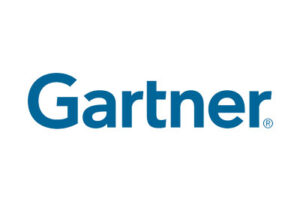Industries
Chemicals
Solving Supply Chain Challenges in the Chemical Industry
The chemical industry plays a vital role in our daily lives, from food and clean water to energy and medical treatments. However, it faces numerous supply chain challenges, including invoice discrepancies for gas and liquid deliveries by truck. A mismatch often occurs between the actual weight measured by the buyer at delivery and the weight invoiced by the supplier. This discrepancy makes it difficult to reconcile data and perform an accurate three-way match.


Real-Time Invoice Reconciliation with Mobile Automation
Nipendo simplifies the process by allowing recipients to update the actual weight received through a mobile app and attach a photo of the weighing certificate. This seamless integration ensures that 95% of invoice processing is automated and error-free, syncing directly with the buyer’s ERP system for smooth and accurate transactions.
Chemical manufacturers must perform rigorous maintenance on their production lines due to high wear and tear. Validating invoices for these services can be a complex process—starting with documentation, followed by approvals, and final reconciliation. Traditionally, this process is triggered manually by the supplier’s invoice, leading to inefficiencies.
Eliminating Manual Errors with Automated Service Invoice Processing
Many companies still rely on slow, manual processes to document, approve, and pay for maintenance services. Nipendo transforms this workflow by receiving invoices electronically, automatically placing them on hold, and sending transaction data to the ERP system. A draft Service Entry Sheet (SES) is then created for review, ensuring compliance before final approval and three-way matching for payment processing.
With Nipendo, buyers and suppliers in the chemical industry benefit from enhanced data accuracy and an optimized supply chain. This automation ensures timely delivery of goods, eliminates invoice discrepancies, and accelerates payment processing—ultimately driving efficiency and reducing operational risks.

“By providing real-time visibility to receivable worthiness and partnering with non-bank capital resources, Nipendo is expanding the range of available trade financing options at a time of great need.”

David Gustin
President, Global Business Intelligence and Managing Editor, Trade Financing Matters.

“We deployed Nipendo back in 2017 and found the Nipendo team extremely helpful and professional. We were able to continue working in our ERP system as before but saw a 180-degree shift in the way invoices were managed and in supplier relations. Before Nipendo, we manually processed invoices and keyed in data, had piles of paperwork, lost invoices, and missed payment dates. We now have full transparency into invoice processing and payment status, better supplier relations and an associated improvement in supply chain, along with overall improved organizational efficiencies.”

Yehudit Alkobi
Head of Finance Departmentt

“Nipendo enables interoperability between different supplier communication solutions (for example, electronic data interchange [EDI], supplier networks and e-invoicing), allowing enterprises to rapidly achieve over 90% straight-through processing of all supplier invoices directly to their existing ERP systems.”
Gartner
Cool Vendors in Integration, 2014
“Nipendo is the real deal when it comes supporting both application capability in P2P, such as e-invoicing and the connectivity or network layer itself.”

Jason Busch
Cool Vendors in Integration, 2014

“Admittedly, we were initially reluctant to deploy Nipendo, fearing it would add to our work and possibly require the hiring of additional staff. We would likely not have done so had our customer not required us. However, after deploying the platform using a B2B connection, we realized significant benefit from it and now urge our customer to expand the platform’s utilization. We find ourselves spending far less time around invoice submission and, since we have full transparency into the process and into invoice and payment status, we no longer need to call the customer directly. Our business processes have improved significantly, and we’re better able to plan ahead.”

Yakir Dvir
Chief Information Officer

“Before moving to Nipendo’s digital platform, we had to manually process hundreds of thousands of physical documents… we were sometimes late paying our suppliers… Nowadays the Electric Company receives the vast majority of invoices through Nipendo’s digital platform, which automatically examines them and provides intelligent validations… Once we started using Nipendo our work processes shortened and became more efficient. The number of people required to handle invoices was reduced and the company’s ability to comply with payment obligations to suppliers improved significantly.

Masha Alony
Head of Accounting Division

“The Nipendo platform has enabled IAI to significantly improve supply chain efficiencies and supplier relations by creating transparency, and by automating the bulk of documentation along with the proper validations. This has freed up our team to address more value-add challenges, has eliminated data errors, and has enabled us to meet our SLA vis-à-vis suppliers and customers. Beyond the technology’s ability to address complex matters, the Nipendo team has demonstrated drive, flexibility, and creativity. All of this has encouraged us to move into new areas with Nipendo and to strive towards making it a one-stop-shop for IAI and its global suppliers.”

Eyal Morad
Deputy COO and VP Supply Chain
“By providing real-time visibility to receivable worthiness and partnering with non-bank capital resources, Nipendo is expanding the range of available trade financing options at a time of great need.”

David Gustin
President, Global Business Intelligence and Managing Editor, Trade Financing Matters.

“We deployed Nipendo back in 2017 and found the Nipendo team extremely helpful and professional. We were able to continue working in our ERP system as before but saw a 180-degree shift in the way invoices were managed and in supplier relations. Before Nipendo, we manually processed invoices and keyed in data, had piles of paperwork, lost invoices, and missed payment dates. We now have full transparency into invoice processing and payment status, better supplier relations and an associated improvement in supply chain, along with overall improved organizational efficiencies.”

Yehudit Alkobi
Head of Finance Departmentt

“Nipendo enables interoperability between different supplier communication solutions (for example, electronic data interchange [EDI], supplier networks and e-invoicing), allowing enterprises to rapidly achieve over 90% straight-through processing of all supplier invoices directly to their existing ERP systems.”
Gartner
Cool Vendors in Integration, 2014
“Nipendo is the real deal when it comes supporting both application capability in P2P, such as e-invoicing and the connectivity or network layer itself.”

Jason Busch
Cool Vendors in Integration, 2014

“Admittedly, we were initially reluctant to deploy Nipendo, fearing it would add to our work and possibly require the hiring of additional staff. We would likely not have done so had our customer not required us. However, after deploying the platform using a B2B connection, we realized significant benefit from it and now urge our customer to expand the platform’s utilization. We find ourselves spending far less time around invoice submission and, since we have full transparency into the process and into invoice and payment status, we no longer need to call the customer directly. Our business processes have improved significantly, and we’re better able to plan ahead.”

Yakir Dvir
Chief Information Officer

“Before moving to Nipendo’s digital platform, we had to manually process hundreds of thousands of physical documents… we were sometimes late paying our suppliers… Nowadays the Electric Company receives the vast majority of invoices through Nipendo’s digital platform, which automatically examines them and provides intelligent validations… Once we started using Nipendo our work processes shortened and became more efficient. The number of people required to handle invoices was reduced and the company’s ability to comply with payment obligations to suppliers improved significantly.

Masha Alony
Head of Accounting Division

“The Nipendo platform has enabled IAI to significantly improve supply chain efficiencies and supplier relations by creating transparency, and by automating the bulk of documentation along with the proper validations. This has freed up our team to address more value-add challenges, has eliminated data errors, and has enabled us to meet our SLA vis-à-vis suppliers and customers. Beyond the technology’s ability to address complex matters, the Nipendo team has demonstrated drive, flexibility, and creativity. All of this has encouraged us to move into new areas with Nipendo and to strive towards making it a one-stop-shop for IAI and its global suppliers.”

Eyal Morad
Deputy COO and VP Supply Chain
